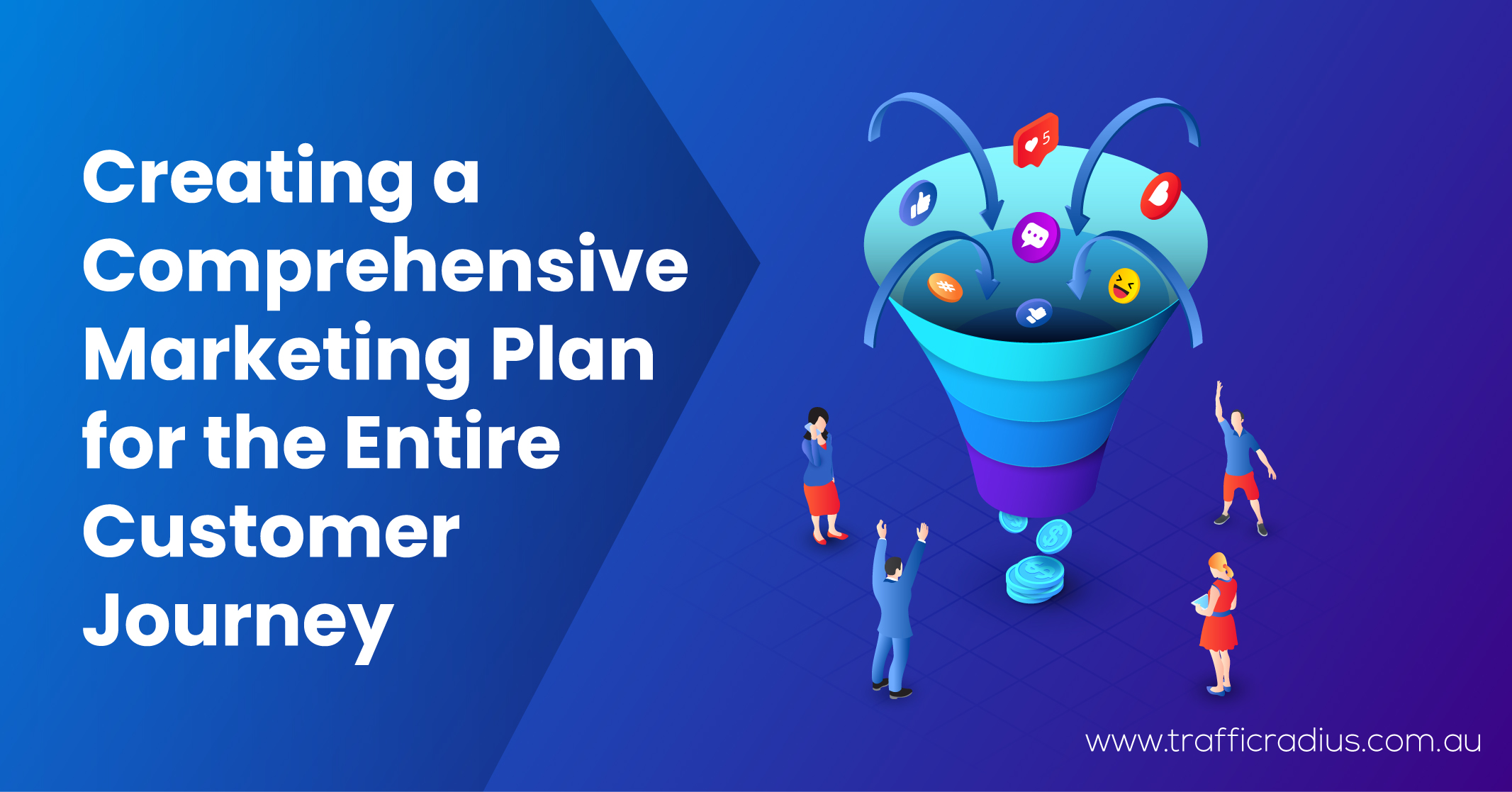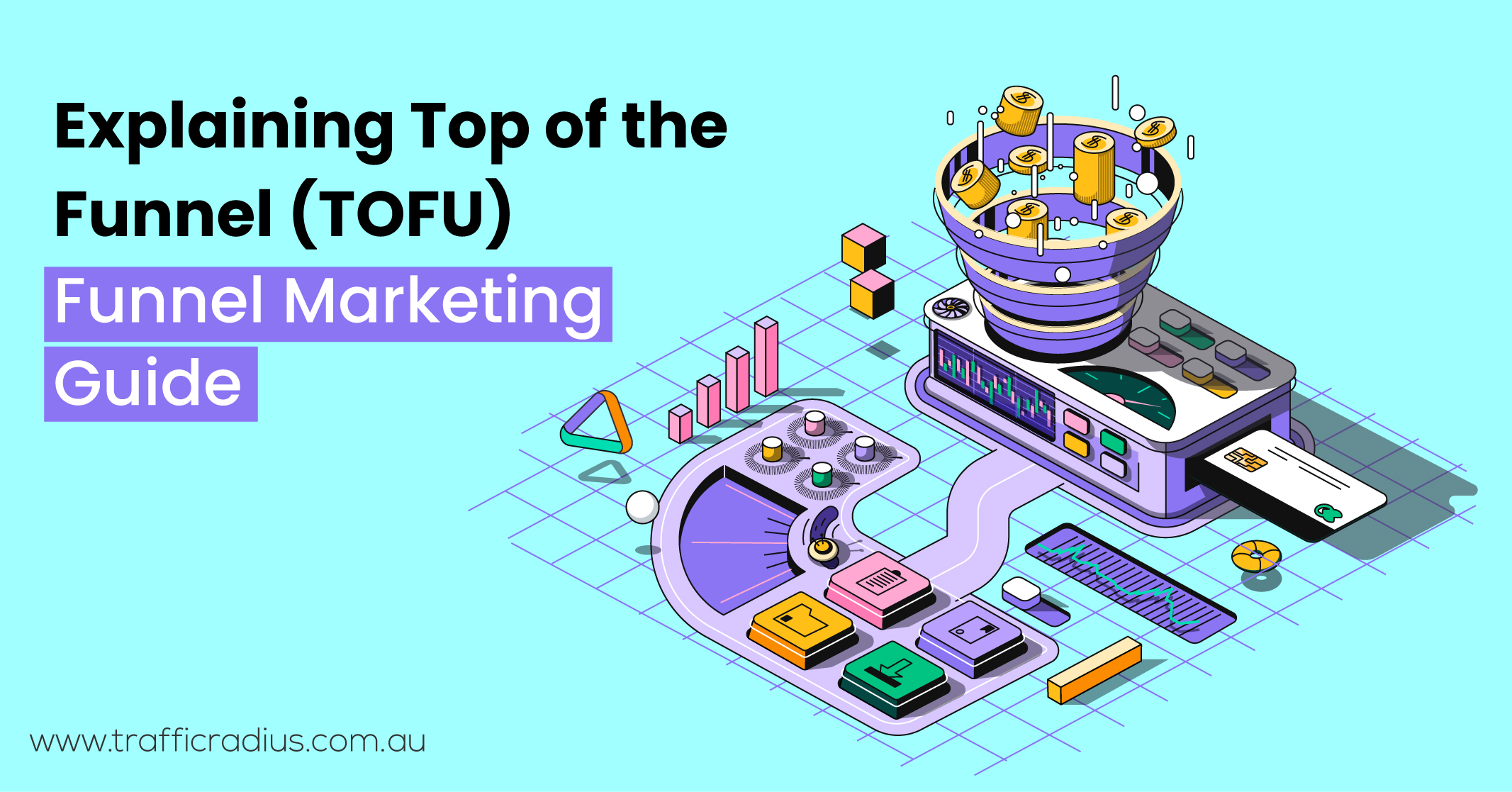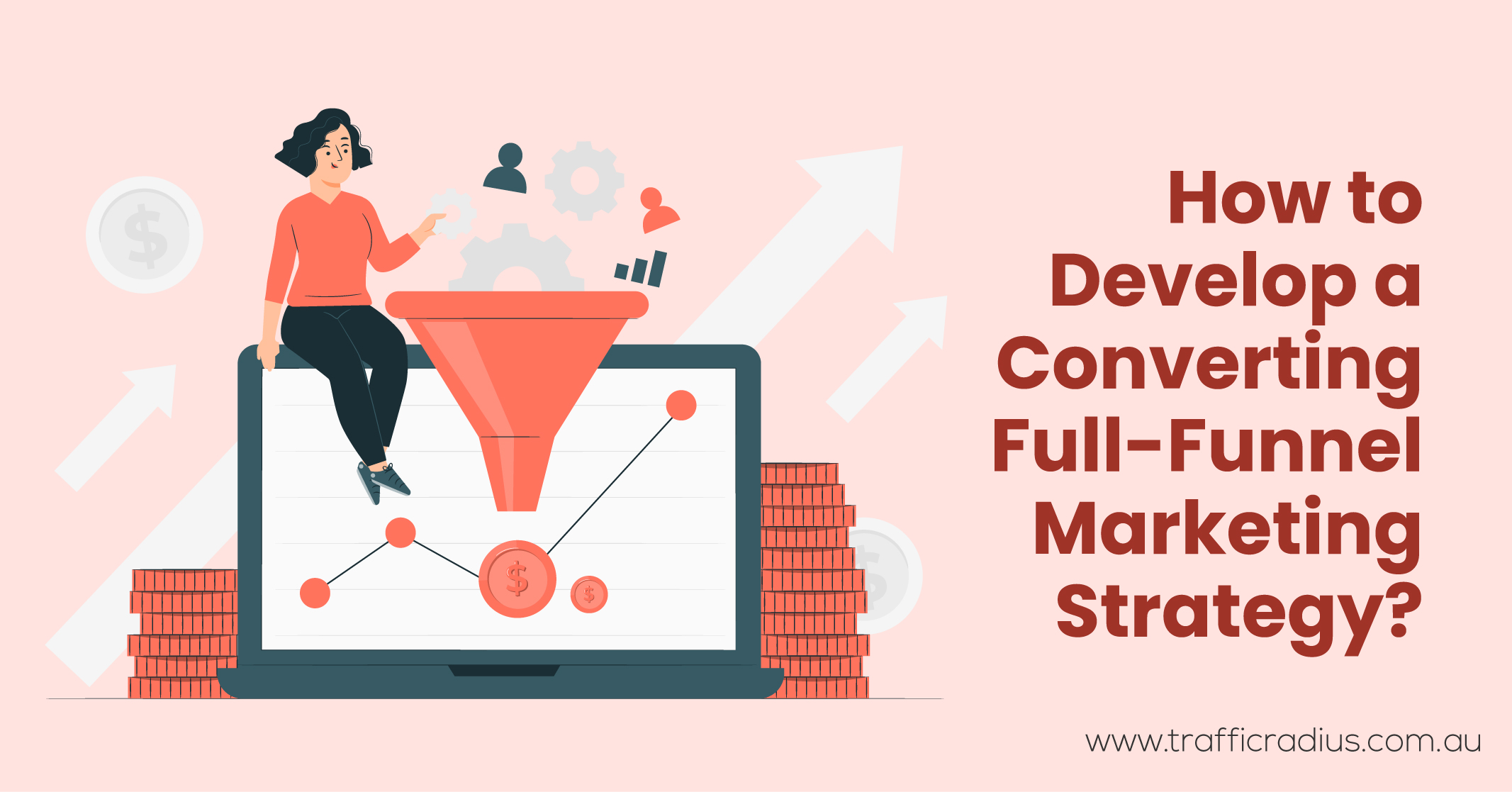I hope you enjoy reading this blog post.
If you want to get more traffic, Contact Us

Click Here - Free 30-Minute Strategy Session
Be quick! FREE spots are almost gone for this Month. Free Quote

Navigating through the world of full-funnel marketing and omnichannel strategies can be perplexing for many. Numerous articles delve into intricate concepts like key performance indicators (KPIs) and goal monitoring.
Instead of overwhelming you with unnecessary intricacies, this blog provides a straightforward and practical method for constructing a powerful full-funnel marketing strategy.

Click Here – Free 30-Minute Strategy Session
Be quick! FREE spots are almost gone for this Month
What You Will Learn?
It aims to enable you to effectively reach prospective customers at every step of their journey. To facilitate comprehension and implementation, real-world examples will be included as well.
So, let’s begin with what is a funnel in digital marketing.
In the realm of digital marketing, a funnel represents the visual representation of the customer journey and the steps involved before a potential customer completes a desired action or makes a purchase.
Funnels marketing illustrates the distinct phases that individuals progress through as they transition from being unfamiliar with a brand or product to becoming loyal customers.
Types of Funnels:
In the realm of digital marketing, a variety of funnel types exist to address distinct objectives and desired outcomes. Here are several common funnel types:
These represent a few digital marketing funnel examples. The selection of a particular funnel depends on the specific goals and objectives of the marketing campaign and the desired actions from the target audience.
Learn More: What is the Role of Digital Marketing?
Do you want to learn about the latest marketing trends and strategies? With Traffic Radius, you can get curated content right from industry experts and access valuable marketing resources and information. Now you can
enhance your knowledge while staying ahead in the ever-evolving marketing landscape.
Full-funnel marketing encompasses a comprehensive approach that effectively reaches potential customers at every stage of the sales funnel, spanning from initial awareness to the ultimate conversion.
It entails developing customised marketing strategies and content that specifically cater to each phase of the customer journey, encompassing awareness, consideration, evaluation, and purchase.
Funnel Marketing Tips:

At the top of the marketing funnel, the focus is on reaching out to potential customers who may have limited awareness of your brand or the problems you can address.
This stage typically encompasses the largest audience as it targets individuals who lack specialised knowledge and understanding, making it crucial for generating brand awareness and interest.
Marketing Funnel Examples:
For instance, we have crafted a comprehensive guide to address the question, “What is SEO?” This content is intended for individuals who are searching for this query on Google, unaware of both the concept of SEO and the existence of our software. Such content falls under the top-of-the-funnel category.
In the middle of the marketing sales funnel, the primary objective is to engage with individuals who have recognised a problem but have not yet identified the specific solution. The funnel starts to narrow down at this stage.
Marketing Funnel Examples:
Our guide on keyword research serves as a prime example of middle-of-the-funnel marketing. When someone searches for “keyword research,” they likely possess a basic understanding. While they are closer to becoming a customer than those seeking beginner information, they might not be ready to make a purchasing decision just yet.
Bottom of the funnel (BOFU):
Bottom-of-the-funnel marketing aims to target individuals who have a clear understanding of their problem and are actively considering your products or services as a potential solution. This stage typically represents the smallest and most targeted segment of the funnel.
Marketing Funnel Examples:
A notable example of bottom-of-the-funnel content is our comparison article between Ahrefs and SEMrush. When someone searches for “Ahrefs vs SEMrush,” they are likely in the buying phase but require assistance in making a final decision.
It is crucial to develop content or media that caters to all stages of the marketing funnel. Neglecting any stage can result in missed opportunities to engage potential customers.
Many companies tend to focus solely on bottom-of-the-funnel (BOFU) marketing, as it often yields higher conversion rates. However, BOFU marketing is usually more expensive and competitive compared to other funnel stages.

You can formulate a highly effective funnel marketing strategy by following these five steps:
Step 1: Identify the Customer Journey:
Begin by gaining a deep understanding of how your customers progress from being unaware of your brand to making a purchase. This entails comprehending the buyer’s journey.
The content marketing funnel comprises three stages:
What To Do?
Step 2: Select your Marketing Channel:
Attempting to create a funnel marketing strategy across multiple channels simultaneously can potentially undermine your plan’s success even before it takes off.
SEO proves highly effective for full-funnel marketing since it allows you to target keywords throughout the funnel, achieve high rankings in Google search results, and consistently attract traffic month after month.
For instance, our article on techniques for obtaining more website traffic generates an estimated 1,000 to 2,000 monthly search visits, as per Traffic Radius data.
What To Do?
Step 3: Determine your key performance indicators (KPIs)
While other guides might complicate this aspect, we will ensure it remains straightforward.
Key performance indicators (KPIs) are measurable metrics that enable you to monitor the performance of your marketing initiatives and make necessary adjustments to your strategy.
KPIs can encompass various aspects, such as website traffic, goal conversions and attributions, time on page, bounce rate, and more.
What To Do?
We suggest starting with a single KPI: Traffic.
Step 4: Develop content
Now that your strategy is in place and you have identified your KPIs, it’s time to embark on creating your content.
What To Do?
For instance, let’s consider Billy Blogger’s buyer journey in the awareness or top-of-the-funnel (TOFU) stage. We can start with a seed keyword like “website traffic” and explore the suggested keyword ideas.
From these ideas, we can identify potential article topics such as:
Step 5: Monitor performance and make adjustments
After publishing articles and initiating promotional efforts, it’s essential to track the performance of your content over time to evaluate its effectiveness.
What To Do?
For example, if the Top pages report highlights significant success with affiliate marketing content (which falls under the middle-of-the-funnel or MOFU stage), it would be beneficial to create additional articles on this topic. By following this approach, we have witnessed substantial growth, attracting thousands of new visitors every month.
The top pages report serves as a basis for determining which pages to prioritise for conversion optimisation. By focusing on enhancing lead generation and sales on your highest-traffic pages, you can maximise the return on your marketing efforts.
Implementing a comprehensive sales funnel marketing strategy is essential for businesses seeking to maximise their marketing effectiveness and achieve long-term success.
By targeting potential customers at every stage of the sales funnel, from initial awareness to final conversion, businesses can effectively nurture leads, foster strong customer relationships and cultivate brand loyalty.
Throughout this guide:
What To Do?
A well-executed full-funnel marketing strategy empowers businesses to expand their reach, drive conversions, and cultivate strong customer loyalty. By embracing this holistic approach, you can enhance the overall impact of your marketing efforts and achieve sustainable growth in today’s highly competitive business landscape.

LEAVE A REPLY